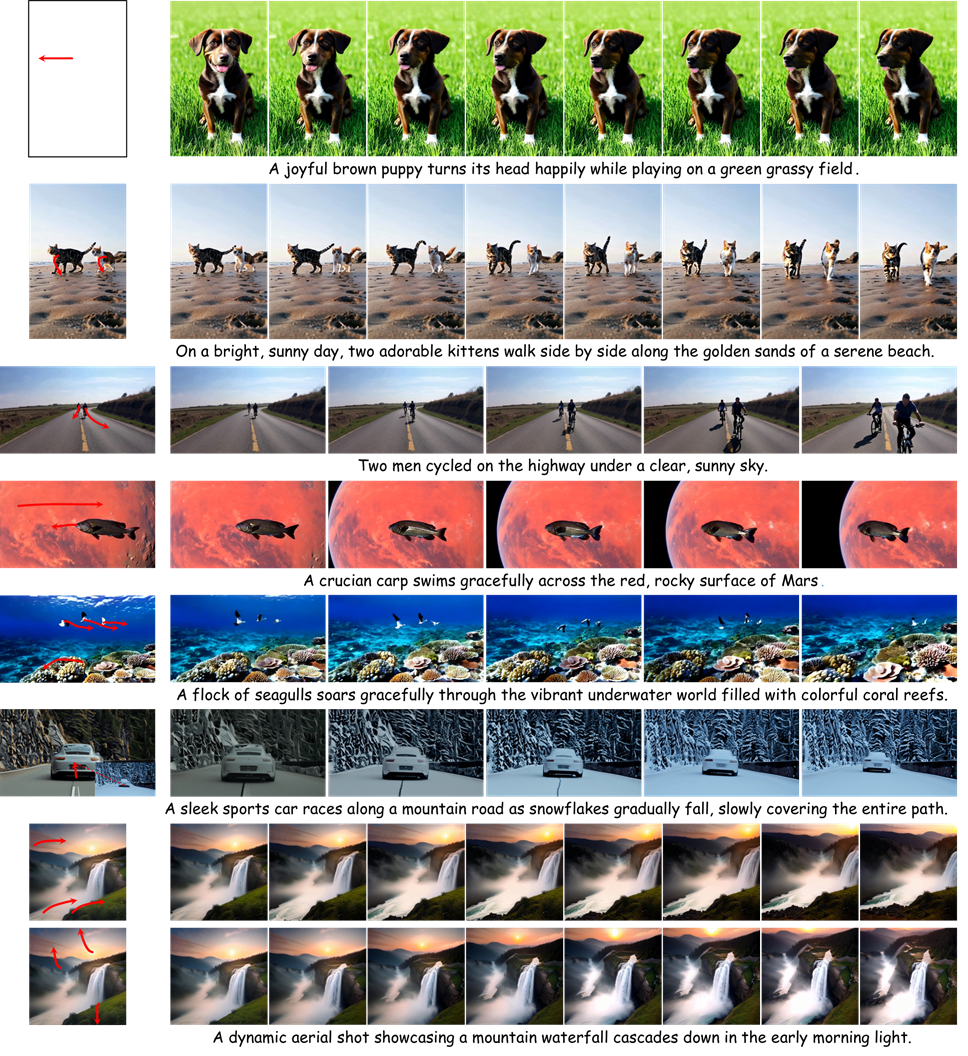In the rapidly evolving world of artificial intelligence, Alibaba Group Holding is making waves with its latest project—Tora, a video-generating tool designed to revolutionize how videos are created using AI. This innovative tool is based on OpenAI’s Sora model and marks a significant step forward for the Chinese tech giant as it deepens its foray into AI-driven video generation.
What is Tora?
Tora is a state-of-the-art video-generation framework that builds upon the foundation of OpenAI’s Sora. The tool is designed to create high-quality videos using a combination of images, text, and trajectory data. By adopting Sora’s foundational model, Tora leverages advanced AI techniques to produce videos that are not only visually impressive but also aligned with precise movement trajectories, making it a powerful tool in the realm of AI-generated content.
Technological Advancements Behind Tora
At the core of Tora’s capabilities lies the Diffusion Transformer (DiT) architecture, a novel approach that underpins the Sora model. DiT is a key element in Tora’s ability to generate videos that accurately reflect the dynamics of the physical world. By integrating this architecture, Tora ensures that the movements within the generated videos follow specified paths, enhancing the realism and coherence of the content.
The Role of Trajectory-Oriented Video Generation
One of the standout features of Tora is its trajectory-oriented video generation framework. This approach ensures that the movements depicted in the videos are not only realistic but also adhere to predetermined paths. This capability is crucial for applications where precise motion is essential, such as in animation, simulation, and virtual reality environments. By focusing on trajectory accuracy, Tora sets itself apart from other video-generation tools, offering a level of detail and precision that is critical for professional-grade content.
Practical Applications of Tora
Tora’s potential applications are vast and varied. For instance, it can be used to create detailed animations where characters or objects move according to specific paths, enhancing the storytelling experience. Additionally, industries such as gaming, film production, and advertising can leverage Tora to produce high-quality video content that meets their exact specifications. The tool’s ability to generate videos guided by a combination of text, images, and trajectories opens up new possibilities for creative expression and content creation.
Alibaba’s Broader AI Initiatives
Tora is not Alibaba’s first venture into AI-driven video generation. Earlier this year, the company unveiled Emote Portrait Alive (EMO), a model that can transform a single still image and audio sample into a dynamic animated avatar. EMO, like Tora, showcases Alibaba’s commitment to pushing the boundaries of what AI can achieve in the realm of video and animation. With these tools, Alibaba is positioning itself as a leader in AI innovation, particularly in the competitive field of video generation.
The Competition in AI Video Generation
Alibaba is not alone in its pursuit of AI video generation dominance. Companies like Shengshu AI, Zhipu AI, and Kuaishou Technology have also introduced their own text-to-video tools, each with unique features and capabilities. For example, Shengshu AI’s Vidu allows users to generate short video clips based on text inputs, while Zhipu AI’s Ying model can create videos from both text and image prompts. However, Tora’s trajectory-oriented approach and its integration of advanced AI architecture give it a distinct edge in terms of precision and flexibility.
Challenges and Future Prospects
Despite its impressive capabilities, Tora, like all AI tools, faces challenges. The complexity of generating videos that are both realistic and dynamic requires continuous refinement of the underlying algorithms. Additionally, the need for large amounts of data to train these models presents a hurdle in terms of resource allocation and computational power. However, as AI technology continues to evolve, tools like Tora are likely to become even more sophisticated, offering users greater control over the content they create and potentially transforming the video production industry.
Alibaba’s Tora represents a significant advancement in the field of AI video generation. By building on the foundations laid by OpenAI’s Sora and incorporating cutting-edge technologies like the Diffusion Transformer architecture, Tora is poised to set new standards in video content creation. As Alibaba continues to innovate and expand its AI capabilities, tools like Tora will play a crucial role in shaping the future of digital media, offering new opportunities for creativity and expression.
FAQs
What is Tora by Alibaba?
Tora is a video-generating tool developed by Alibaba, based on OpenAI’s Sora model. It uses AI to create videos guided by text, images, and trajectory data.
How does Tora differ from other video-generating tools?
Tora’s trajectory-oriented video generation framework ensures that the movements in its videos follow specified paths, offering greater precision and realism compared to other tools.
What is the role of Diffusion Transformer (DiT) in Tora?
The Diffusion Transformer (DiT) architecture is integral to Tora’s ability to generate videos that accurately reflect physical dynamics and follow specific trajectories.
How will Tora impact the future of video generation?
Tora’s advanced AI capabilities could revolutionize video production, offering new possibilities for industries like gaming, film, and advertising.
When will Tora be available to the public?
The Tora project is still ongoing, and Alibaba has not yet announced when it will be available for public use.


